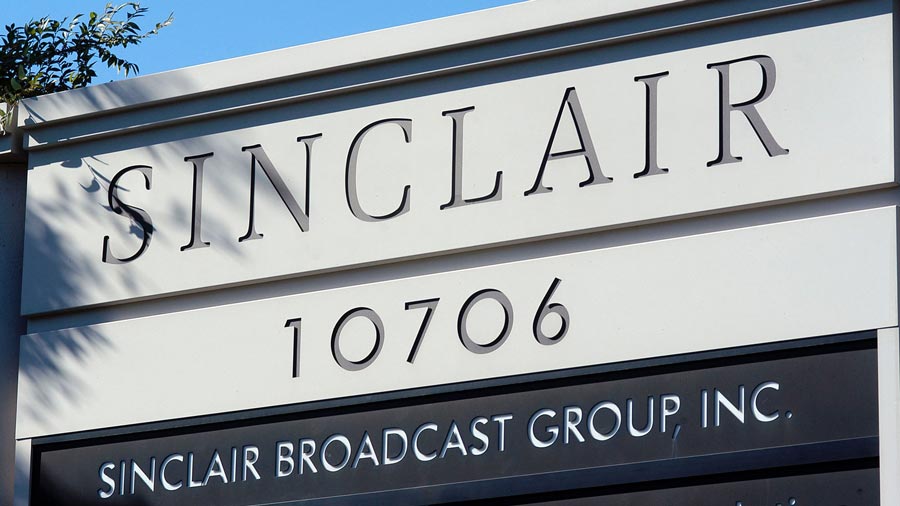Op-Ed: Across the Political Spectrum

The recent articles maligning Sinclair Broadcast Group published by Bloomberg and many mainstream media outlets represent a confusing and largely irrelevant hodge-podge of alarmist prevarication and silly partisan sniping. It is almost as if, by signaling the decades-long development and recent successes of Sinclair’s television business, the media feels as if it is being denied its sole right to control the perspective of the news content received by everyday Americans.
Among the pettier accusations is that, as a political pundit who appeared on the Sinclair network in 2000, I was also a paid consultant for the Bush Administration and did not consistently disclose that fact for viewers. I was appropriately fined for that oversight and have since that time moved on to forming a company, Howard Stirk Holdings, which owns several broadcast TV stations in various markets, some which have business relationships with Sinclair Broadcast Group. In its zeal to revise facts about Sinclair, the mainstream media continues to ignore more recent developments and thus misrepresents the reality of the situation.
This is an increasingly common occurrence these days, as the media have, in essence, abandoned their role as reporters and chroniclers of current events, to becoming drivers of public opinion. And it is in fact that very failure on the part of media organizations that has created the opportunity that is before both Howard Stirk Holdings and Sinclair Broadcast Group. Namely, it is the opportunity to grow a business at scale that offers local/national news and serves the public interest.
The media ownership rules currently in place date back to the Radio Act of 1927, when the media landscape was far different than it is today. Technological innovations in spectrum management and signal engineering have enabled broadcasters to deliver content to local markets far more efficiently than was ever envisioned under the original law. Moreover, technological revolutions in internet and cable industries have created an ever-proliferating array of channels for content delivery.
And yet the spirit of the law, that the limited spectrum allocated to television broadcasting is a publicly owned asset that must be operated in the public interest, remains as true and valid today as it ever was. This gets to the heart of other misrepresentations. By characterizing Sinclair’s business as a pro-Trump propaganda outlet, the liberal media again misleads. It goes without saying that the values that Sinclair’s programming presents tend to reflect the values of its owners. This has always been the case–and was just as true when Sinclair stations operated under more politically liberal owners. People forget, the liberal revolution in newsroom ownership occurred only about 40 years ago, in the aftermath of the Vietnam War, as entrepreneurs with anti-establishment bents entered the marketplace.
We are again at an inflection point in which the pendulum seems to be swinging back towards conservatism in media. The ascendance of Donald Trump to America’s 45th president represents a sea-change in public opinion that could not have been foreseen from inside the liberal media bubble. That is why, even up to Election Night, mainstream media election forecasters got it completely wrong.
This points to another reason why independent news organizations like Sinclair are gaining market share. The public, by and large, continues their distrust of the mainstream media. They have been duped and lied to so many times that they are gradually tuning out the major national news sources. They are once again turning to local sources for their news, sources that are rooted in their communities, people they know and trust.
Howard Stirk Holdings shares resources and develops content and programming at Sinclair's flagship stations, cable news Channel 8 and WJLA in Washington, DC, for example. There has been practically a sea change in the type of programming that existed under the previous ownership, the Albritton Group. Under the previous ownership, news viewership was flagging and production costs soared as evidenced by their declining ratings. SBG made strategic changes in their news, talent, and content, which in turn has produced dramatic increases in audience share—as of May of this year, WJLA is number one in the coveted 6 p.m. slot.
KOMO, Sinclair’s Seattle affiliate, is number one in the 4:30 a.m., mid-day, 4 p.m., 5 p.m. and 6-6:30 p.m. slots. When compared to the stations’ performance under the previous ownership, Sinclair has clearly transformed the business, both in relative rank and overall viewership
Sinclair’s innovations in distributing centrally produced content across markets while at the same time preserving the local flavor of news and information are a major leap forward in this regard. That is why Sinclair generates such significant revenue on its invested assets. That is why the marketplace has responded so favorably to its business model.
We could go on rebutting each of the points raised in the article, but the bottom line is that we are a trusted source of local news for millions of viewers who have become disenchanted with the misinformation they have received from the mainstream media. We are building robust businesses that incorporate innovative approaches to content distribution that leverage technological platforms across the internet, social media and cable.
Neither Sinclair nor HSH represents any political party or partisan agenda. Rather, we reflect the values of the American people who have come to trust us to provide them with fair and balanced perspectives. We are successful because we have proven we can operate in the public’s interest, not merely parrot the liberal or conservative establishments. This is a model for business growth and stewardship of the airwaves that should be lauded and emulated, not belittled.
Armstrong Williams is manager / sole owner of Howard Stirk Holdings I & II Broadcast Television Stations and the 2016 Multicultural Media Broadcast Owner of the year.
Broadcasting & Cable Newsletter
The smarter way to stay on top of broadcasting and cable industry. Sign up below



